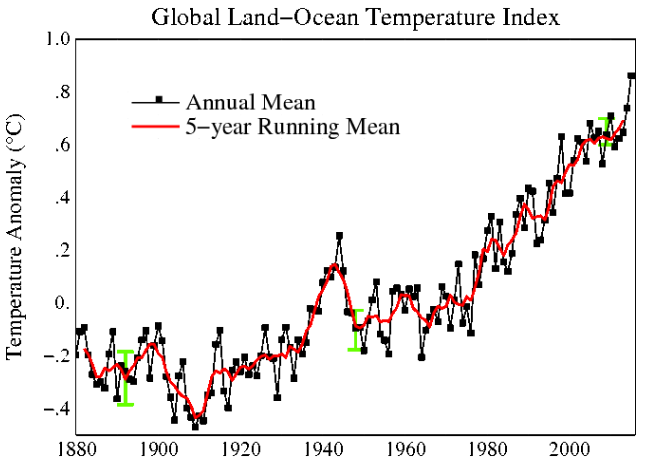While many of the attributes of the genus Homo are shared by other species, it’s the use of fire which uniquely distinguishes Homo from other members of the animal kingdom. Evolved on the surface of a flammable carbon-rich biosphere exposed to an oxygen-rich atmosphere, the skill humans acquired in igniting fire and combustion has become their blueprint; it has affected the rest of nature. From nomad clans of hunter-gatherers to civilizations releasing copious amounts of energy and thus increasing entropy in nature at levels many times higher than the human physical capacity, Homo sapiens have become a dominant force in nature.
The oldest confident records of human-lit fire go back to about 1 million years (Ma) ago. However, there’s evidence of anthropogenic fires as early as ~1.8 Ma, about the time H. ergaster and H. erectus emerged as physically distinct from other human species such as H. Habilis and H. Rudolfensis, likely in part as the consequence of a new diet of cooked meat.
Living around camp fires for hundreds of thousands of years, the mesmerizing effect on the human mind of the life-like dance of the flames has likely inspired intelligence, reflection, curiosity, imagination and premonition and fear of death. That gave rise to cravings for immortality, omniscience and omnipotence, as manifested by burial and cremation and later by construction of tombs and monuments to enshrine the rulers for eternity.
Further to extensive burning by pre-historic humans and Neolithic farmers, which may have raised atmospheric greenhouse gas level by a small amount, the large-scale excavation and combustion of coal, oil and gas since the 18th century—compounded by land clearing and release of carbon from soils, tropical and high latitude bogs and permafrost—is leading to a shift in a long-term composition of the atmosphere-ocean system, with an inherent rise in global temperature. The rise within only a couple of centuries of atmospheric CO2 from ~280 to 403 parts per million (ppm) and consequent rise in global land-sea temperatures (Figures 1 and 2) is shifting the relatively stable Holocene climate into uncharted territory.
Figure 1. Global land-ocean temperature index

Figure 2. Accelerating Global Warming? NASA shows February of 2015 was Second Hottest on Record.
To date, the combined release of carbon from combustion and land clearing exceeds 550 billion tons carbon (GtC). The extraction of recoverable estimated carbon reserves would lead to an atmospheric CO2 level above 1,000 ppm, similar to that of early Eocene levels some 50 million years ago. Mean global temperatures, which have already rose by approximately 1.5 degrees Celsius over the continents, would rise 4 degrees Celsius above preindustrial levels, at a rate threatening a mass extinction of species. At +2 degrees Celsius, under Pliocene conditions (5.3–2.6 million years ago) the sea level was some 25+/-12 meters higher than at present, inundating coastal plains and river valleys. As stated by the International Union for the Conservation of Nature:
‘But the rapid loss of species we are seeing today is estimated by experts to be between 1000 and 10,000 times higher than the ‘background’ or expected natural extinction rate (a highly conservative estimate). Unlike the mass extinction events of geological history, the current extinction phenomenon is one for which a single species—ours—appears to be almost wholly responsible. This is often referred to as ‘the sixth extinction crisis’, after the five known extinction waves in geological history.’
However, as industries are affected by global warming and extreme weather events, the scale of carbon emissions is likely to be self-limiting.
It’s natural for people to worry about one issue at a time. In recent decades, it has been the threat of nuclear proliferation. Yet the nuclear danger hasn’t diminished, could only grow in a stressed world and, whereas the time table of global warming is difficult to project accurately, a nuclear event by accident or design may precede tipping points in the climate system. Thus the 2016 Bulletin of the Atomic Scientists states:
‘It is still 3 minutes to midnight: Last year, the Science and Security Board moved the Doomsday Clock forward to three minutes to midnight, noting: ‘The probability of global catastrophe is very high, and the actions needed to reduce the risks of disaster must be taken very soon. That probability has not been reduced. The Clock ticks. Global danger looms. Wise leaders should act—immediately.’
The magnitude of the consequences of Homo sapiens’ combustion and nuclear activities challenges every faith, philosophy and ideal. Ethical and cultural assumptions of free will on the scale of the individual rarely govern the behavior of societies or nations, let alone that of an entire species. What’s required are political systems and leaders which can take humanity back from the brink.
